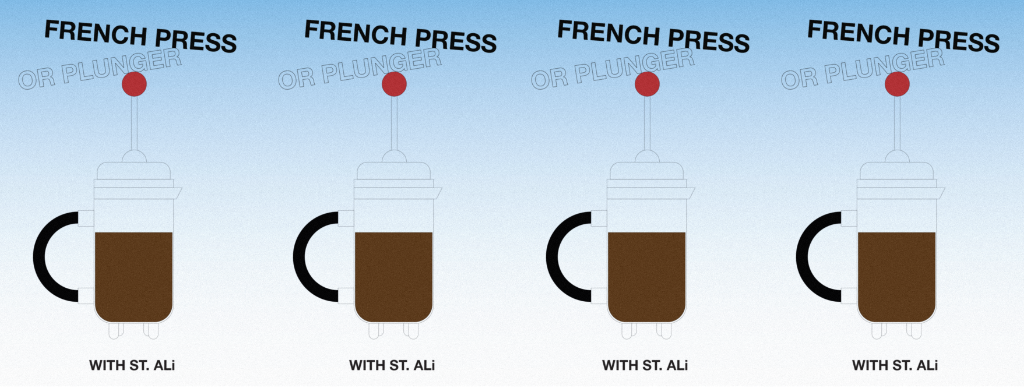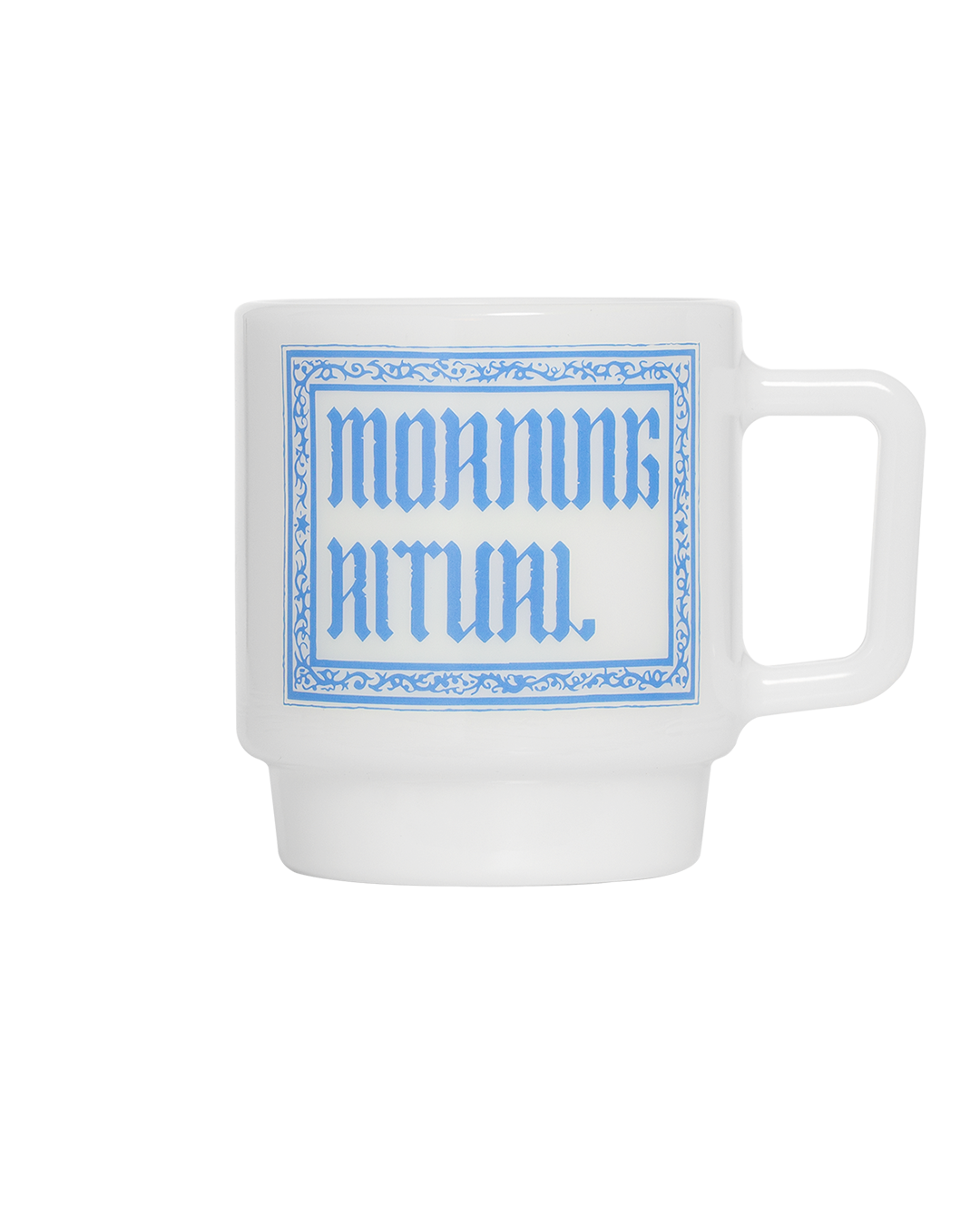
PLUNGE IN—A FRENCH PRESS BREW GUIDE
GET WITH THE GRIND
We need to break the whole beans down to let the coffee soak in all the water, and let the water get out all the yumminess. This is called grinding coffee, and different coffees need different grind sizes.The coarsest setting looks something like fancy flaked sea salt, the finest setting something like flour.
Helpfully, all grinders have numbers on them when changing grind sizes. Lower numbers indicate finer settings, higher numbers indicating coarser settings.
FRENCH PRESS GRIND SETTING
So if the highest number is fancy sea salt, the lowest number something like flour—for a French Press grind setting you want to be well into the top third number. The grinds should look closely like fancy flaked sea salt, but it should still be less than the coarsest setting you can go.THE MAGIC’S IN THE MEASUREMENTS
There’s no point in making a delicious cup of coffee in the morning—then failing miserably the following morning.So if you measure the amount of ground coffee you use, the amount of water you brew with, and how much water you pour—you’ll easily be able to repeat the magic each morning.
French Press is a very forgiving brew method, but you should still try weigh the coffee and water used using a scale. You could also use a measuring cup for water and a levelled-off spoon for coffee—just keep these measurements consistent each brew.
Though it’s a 1L carafe we’re pouring into, start with a little less water—aim for around 350ml of filtered water for brewing, and a little extra for rinsing if you need it. Boil this in a kettle.
Stay away from tap water or bottled water from the supermarket—it’s complicated, but those kinds of waters are great to drink, but not so great to brew coffee with. Use filtered water from a domestic Brita filter or the like. You'll still get good coffee from tap water! But generally filtered water is best.
For the coffee, freshly grind 20g. You can easily double the amount of coffee and water if you want more coffee, but be mindful of the physical space the coffee takes up in the actual Press, and how full it will be once all water is added.
While the beans are whole, they’re protecting the flavour inside from nasty stuff—like oxygen and that weird spice smell down the back of your pantry. Pre-ground coffee is not bad at all though—you’re probably just going to notice more flavour when you grind fresh (a good reason to invest in a decent grinder).
PRE-BREW SET UP
If you haven’t measured out and started boiling your water, do that now. Once it’s boiled give the French press itself a good rinse out to pre-warm the carafe—the biggest secret with French Press is keep everything hot!While the water is boiling also measure out your coffee and grind it if you haven’t already.
GET BREWING
Get your water boiling again.This is an easy way to make sure your water is at the right temperature—there’s no messing about with temperature gauges or settings, you just need to make sure your water is boiling. And like we said earlier—the key to great French Press is keeping things hot.
Now with your ground coffee in the French Press, pour in the water to roughly halfway and stop. Give the grinds a good swirl—you’re aiming to make sure every last grain of coffee has some water touching it.
Pour in the rest of the water, set a timer for 4 minutes—and wait. All the hard work is being done for you as you watch, with the coffee soaking in all the water and the water extracting out all the yumminess.
Perhaps the most crucial step here with the French Press is the plunge. Slowly lower the plunger, being careful not to disrupt the coffee grinds that have sunk to the bottom. Turn the lid to open the pour spout, then pour yourself a delicious cup of coffee.
TIPS
When plunging, if you can’t plunge easily and gently with two fingers, you should stop and start again—your grind size is too small, and you run the risk of building up too much pressure as you plunge with could result in a cracked carafe.For best brew results you can also add two additional steps:
- First step: at the four-minute mark, you’ll notice a ‘crust’ of coffee grinds has formed on top of the brewing coffee. Use to spoons and ‘scoop’ this crust out before plunging.
- Second step: once you’ve carefully lowered the plunger, slowly pour the coffee out into another carafe, big mug, or container. This will stop any of the remaining coffee becoming bitter from the extended time it sits in the bottom of the carafe, continuing to brew and extract out a lot of the flavours we don’t really want.
When pouring into your mug (or transferring the coffee to another vessel) be very careful of those last few inches of coffee mixed in with all the grinds—you really don’t want them in the cup!
If you find your coffee is too weak just use a little more ground coffee next time, and if it’s too strong, shorten the brew time and try three minutes instead.
SHOP COFFEE HERE
NEED A GRINDER?


